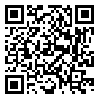Articles accepted at the time of publication
Back to the articles list |
Back to browse issues page
1- Assistant professor of Linguistics, Organization for Educational Research and Planning (OERP) , najafimasoume@yahoo.com
2- Assistant professor of of Linguistics, Academy of Persian Language and Literature
3- Linguist, Payam Noor University
2- Assistant professor of of Linguistics, Academy of Persian Language and Literature
3- Linguist, Payam Noor University
Abstract: (2141 Views)
The present study was conducted with the aim of identifying the basic sentence structures of textbooks written for Iranian students in Persian language. The theoretical principles of the research are based on Tesniere's (1959) Dependency Grammar, which describes syntactic structures in different languages by examining the dependency relationships between head and dependent elements in syntactic groups. The basic sentence structures presented by Tabibzadeh (2001, 2006, 2011) have been used in this research for comparison. The data was extracted from the review of 211 texts belonging to textbooks. In order to collect data, 633 sentences were selected from all the textbooks and their basic structure was extracted using the purposeful sampling method. The findings indicate that in addition to the 24 basic sentence structures provided for Persian language, other basic structures have been used in textbook, which are: || sub., pro. Comp., pre.||, || sub., pro. Comp., pro. Comp., pre. ||. The most used basic structures in the sentences of textbooks of all levels were bi-valency constructions. The study of the complements showed that, the nominal subject 96.4%, the prepositional complement 41.9%, the direct complement 31.4%, the predicate 17.2% and the complement 15.3% are the most used. The findings of the present research show the profile of the language development of 10-12 year old children by identifying the level of syntactic complexity of the sentences in the textbooks. The results of this research show the readability of educational texts written for Iranian students and can be useful for textbook authors.
Keywords: syntactic complexity, basic sentence structure, dependency grammar, coh- metrix, textbook, elementary course, Persian language.
Article Type: مقالات علمی پژوهشی |
Subject:
Linguistics
Send email to the article author
| Rights and permissions | |
 |
This work is licensed under a Creative Commons Attribution-NonCommercial 4.0 International License. |







